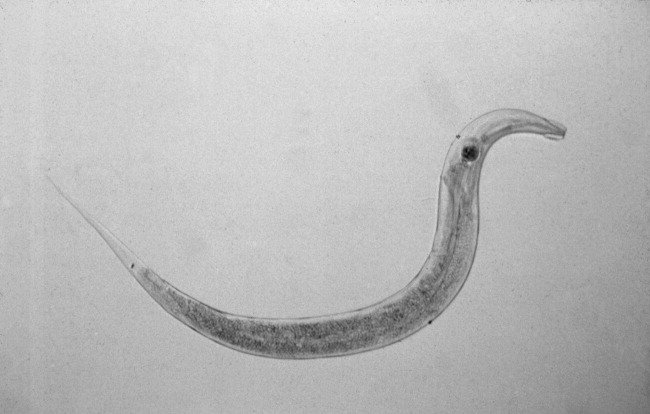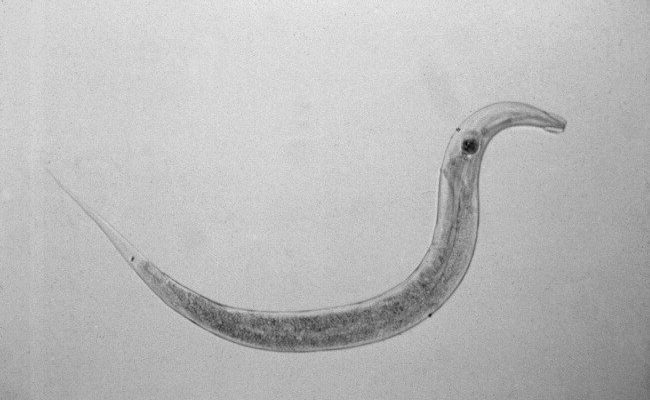
Here’s the thing: while they thrive inside us, pinworms can occasionally be found in their natural habitat—primarily in contaminated environments where they lay their eggs. This can create a little confusion, especially if you’re trying to figure out how to spot one. In this guide, we’ll dive into the world of pinworms, highlighting how to identify them and recognize their habitats. If you’re curious about these little creatures, grab a cup of coffee, and let’s explore together.
What Are Pinworms?
Before we get into the nitty-gritty of identification, let’s talk about what pinworms actually are. Pinworms, or *Enterobius vermicularis*, are small, thin, white parasitic worms. They typically measure about half an inch long, resembling a tiny piece of string. Their main claim to fame is their habit of living in the intestines of humans, where they lay their eggs.
You might be wondering how these worms get to their new homes. Pinworm infections are particularly common among children, as they often spread through direct contact with contaminated surfaces or by ingesting eggs that are accidentally transferred to their mouths. This makes places like playgrounds, schools, and even homes hotspots for pinworm activity.
Where Do Pinworms Live?
If you’re looking for pinworms in their natural habitat, it’s important to understand where they thrive. As mentioned earlier, they typically inhabit the intestines, but they can often be found in the environment during certain conditions. Pinworm eggs are incredibly resilient and can survive outside the human body for several weeks, making them quite the survivalists.
Their preferred locations include:
- Contaminated bedding: Pinworms tend to lay their eggs around the anus at night, which can then transfer to sheets and pajamas.
- Toys and surfaces: If a child infected with pinworms touches a surface after scratching, eggs can stick to toys, door handles, and other commonly used items.
- Dust and soil: Pinworm eggs can become airborne and settle in dust or dirt, especially in places that aren’t regularly cleaned.
So, if you’re trying to identify a pinworm, it’s smart to start looking in and around these areas.
How to Identify Pinworms Visually
Identifying pinworms visually can be tricky, but it’s not impossible! The best time to observe them is at night, when they’re most active. As they crawl out of the rectum to lay eggs, they can occasionally be seen. Here’s what to look for:
1. Use a flashlight: At night, with a flashlight in hand, carefully inspect the anal area for any small white worms. They look like tiny, moving threads.
2. Check the bedding: Look for small white specks on the sheets or pajamas, as these could be eggs.
3. Tape test: A simple method often used is the “tape test.” Press a piece of clear tape firmly against the skin around the anus first thing in the morning, then place the tape on a slide. Under a microscope, you can often spot the eggs.
Keep in mind that pinworms are nocturnal, so be patient and look closely.
Signs of a Pinworm Infection
Recognizing the signs of a pinworm infection is key to identifying them. While you might not see the worms themselves, there are some symptoms you can watch for:
– Itching: One of the most common signs of pinworm infection is itching around the anal area, especially at night. This can be quite uncomfortable and lead to restlessness.
– Irritability: Kids with pinworms may become more irritable or fidgety due to discomfort, which can be confusing for parents.
– Sleep disturbances: The intense itching can lead to sleep loss, resulting in tiredness during the day.
If you notice these symptoms at home, it might be time to investigate further.
Preventing Pinworm Infections
Once you know how to identify pinworms, it’s just as important to learn how to prevent them from taking up residence. Here are some solid steps you can take to keep these pesky worms at bay:
1. Practice good hygiene: Regular hand washing with soap, especially after using the bathroom and before meals, can help reduce the spread of pinworm eggs.
2. Keep nails short: Keeping fingernails trimmed can prevent eggs from getting trapped under them, making it less likely for someone to accidentally ingest them.
3. Wash bedding regularly: Frequent washing of sheets, pajamas, and even stuffed animals can help eliminate any lurking pinworm eggs.
These small adjustments can make a significant difference in keeping your home pinworm-free.
What to Do If You Suspect a Pinworm Infection
If you suspect that someone in your household has a pinworm infection, there are several actions you can take. First, you might want to consult a healthcare professional. They can provide an accurate diagnosis and recommend treatment options.
– Over-the-counter medications: Many effective treatments are available at pharmacies without a prescription. Your doctor can advise you on the right choice.
– Treat the whole family: Since the infection can easily spread, treating all family members is often recommended, even if they don’t show symptoms.
Keeping communication open with everyone involved is crucial. It’s a family affair!
While identifying a pinworm in its natural habitat might sound daunting at first, it’s really about understanding their behavior and habitat. By learning where they live, how to spot them, and recognizing symptoms, you’re taking big steps toward effective prevention and treatment. Remember, pinworms prefer calm environments, much like a cozy little detective in their favorite neighborhood. With a bit of vigilance and a few simple practices, you can keep your home and family safe from these tiny intruders. So go ahead, put on your detective hat, and keep an eye out for those elusive pinworms!

